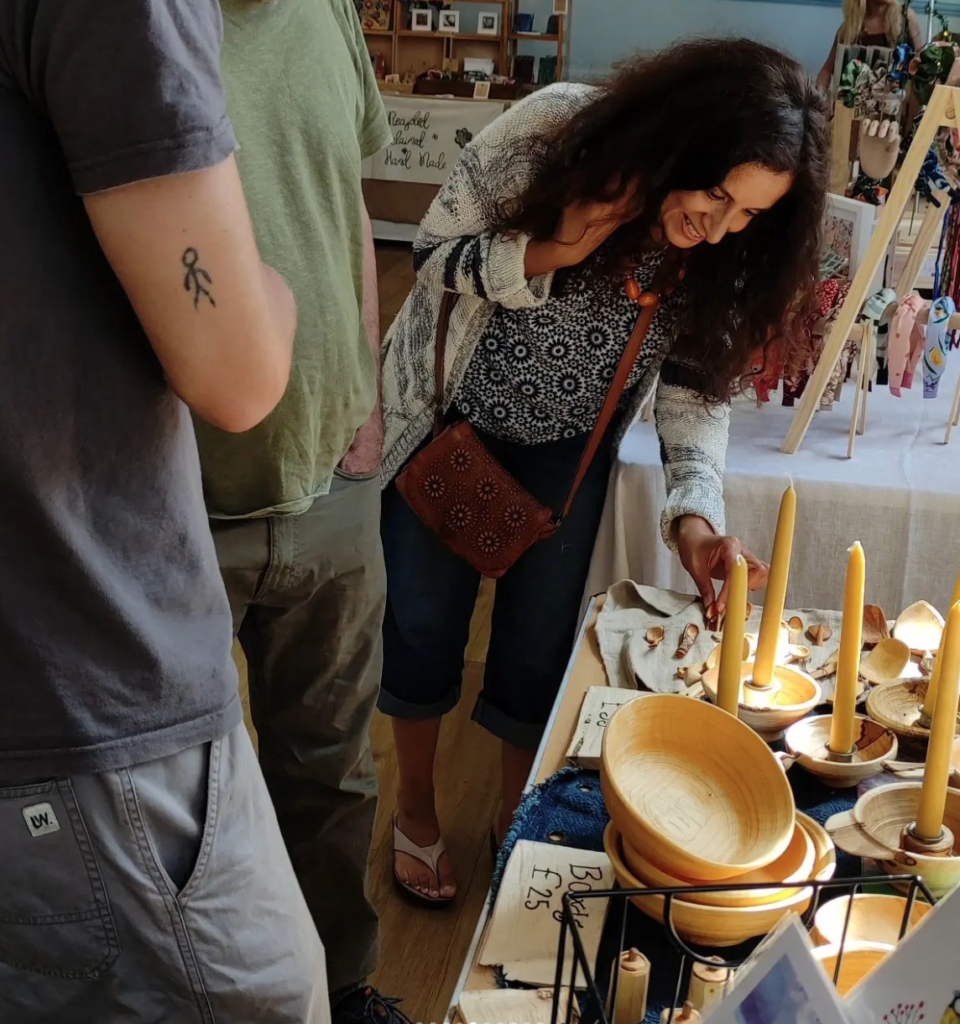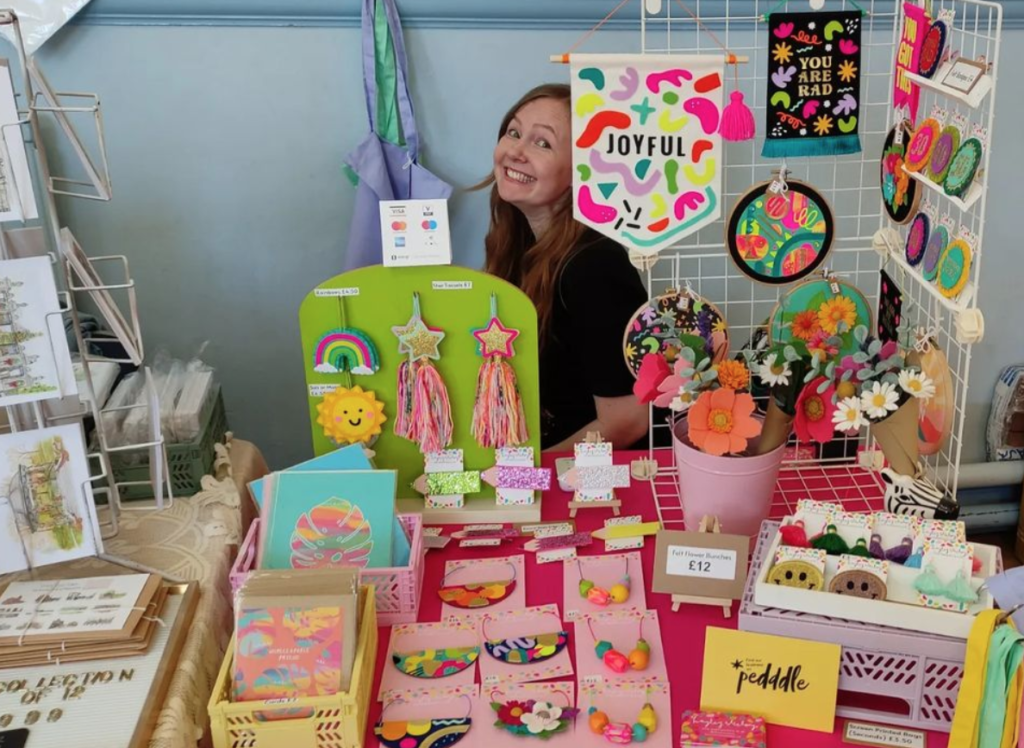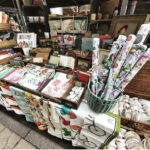Would you love to sell at markets? Have you got one booked but aren’t sure if you have any idea how to set it up? Whether you’ve got your first market lined up or you’re just considering it, check out these tips to help everything run smoothly!
Booking your first market or event
Booking your first event can be daunting and it is often the point at which ‘imposter syndrome’ really kicks in. Remembering all the things you need to take, what insurance you need to have, ensuring you have all the right products, packaging, signs and branding – it is a lot! But it’s important to remember that everyone has been there – everyone has a first time for everything, and your fellow market traders will understand. However, it’s still important to be as prepared as possible.
Have you just started market selling or are you thinking of setting up?
In this article we will look at essential items, ‘nice to have’ items and give you a checklist for your first event.
Let’s presume you have already registered your business as a Sole Trader and you are looking for markets to sell at. Pedddle has a great timeline to support those looking for events to sell at, either via location or date.
Once you’ve booked your place at a market, it’s time to think about what you’ll need on your market stall. Firstly – is a table included? Do you have or need an electric hook-up? If outdoors, is a gazebo provided or will you need to buy your own?
Once you’ve established these basics, the 3 main areas to consider are:
- Your insurance.
- How people can purchase i.e. setting up a card reader, having a secure box for cash and a float
- Your layout and how to draw people in with banners, signs, bags etc.



1. Public Liability Insurance
Insurance is essential for a market – check with your market organiser as some may require evidence of your insurance before they will let you sell at their market. Some companies request that you have Public Liability cover for up to a certain amount too, i.e. 1 million or 5 million pounds, and not just a generic insurance amount.
Getting insurance is fairly simple. You can expect to pay around £40-£100 per year as a solo craft seller (with no employees). Food sellers need to ensure that they disclose their type of product to their insurers, as some insurers don’t cover edible goods.
Pedddle is not affiliated with any of the companies below, but you may wish to look at:
Craftcover – CraftCover.com is the first fully-automated insurance provider, designed especially for the Craft industry by a Craft hobbyist.
A-N insurance – Insurance for artists and crafters.
Coverly – Insurance for all types of small business. They have a flexible monthly direct debit option too, so if there are certain months that you’re not selling at markets, you can switch your insurance off for those months and avoid the charge.
CMTIA – Offering both Public and Product Liability Insurance.
Simply Business – Insurance for market traders.
2. How can people purchase from you?
Card Readers
People rarely carry cash nowadays, therefore a card reader is essential. Sign up to a card reader company such as Sum Up , Square or Zettle – although there are many others. Check what is compatible with your phone too, as there is sometimes a difference with what works best with iPhone and android etc.
Cash Sales
Even if you want to take cash sales, you can still use the payment system on a card reader, which will keep track of your sales. This works like a traditional till, and allows you to review sales and best-selling products for your next market.
Do make sure you have some cash on you and a float too. How much will you need in a float? Think about your item prices – are your products odd amounts, do they end in 99p or are people likely to pay with notes if you have price points of £15, £20 etc?
It’s important to ensure customers can pay by either cash or card so that you don’t miss out on any purchases!
3. Stall layout and how to draw people in
A good stall layout is imperative to draw in passers by and ensure that your stall is memorable. Think of markets as a marketing exercise. Even if you don’t sell well on the day, it’s a chance to hand out business cards, tell people where they can buy from you in future, and get your business name seen.
Here are some blogs which may help:
Think about:
- How to cover your table – if outdoors, you may need table clips or clamps to hold it down
- How will people see your business name and find your contact details? Do you have a sign, business cards, postcards, a banner?
- What stands you’ll need. How will you add height to the table and have room to display everything? Consider peg boards.
- What will the lighting be like? Will it be outdoors in summer, or indoors? Will you need additional strong rechargeable lighting, to fairy lights or elegant rechargeable clip table lights?
- How will you package purchases? Do you have tissue paper or branded bags? Many markets are plastic-free and eco-conscious nowadays, so consider paper bags and eco-friendly packaging.
- Carrying stock from your car to the stall – have you seen the trolley’s? Small or large – links here.
- Clickable floor mats to stop the cold floor penetrating up through your shoes/boots.
Here’s a useful checklist of things to remember – click here for the full lists:
Other aspects of being a stallholder…
1. Social Media – let everyone know where you’re going to be! Click here for a beginner’s guide on getting your business started on socials.
2. A ‘Bits Box’ – take a box of useful items to every market, i.e. scissors, string, pins, spare pens, batteries, clamps, cable ties etc. You never know when you’ll have to deal with a wonky table or a windy day!
3. Clothing. Don’t underestimate how cold markets can be – even indoor markets! You’re basically standing around all day, so the cold can easily seep in. Layer up, don’t forget the waterproofs for outdoor markets, and think about getting a mat to stand on.
4. Food & Drink. Not all markets will have food available. Make sure you take plenty of snacks and plenty of water!
5. Transport. How are you getting your stock and products from your car to the market stall? It may be worth getting a little trolley rather than boxing it up – things can get heavy!
Hope these tips help – we’ll see you at a market soon!






